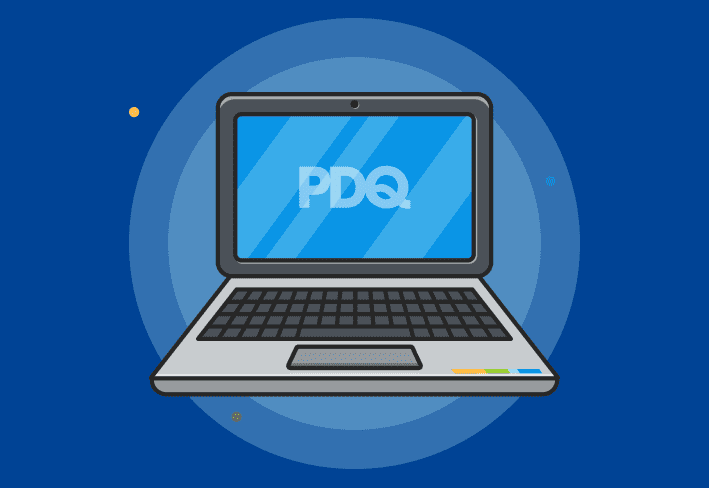Dan Cook, PDQ’s CEO, has a way of explaining mergers and acquisitions that makes the whole process sound a lot more human. He’s also known for his dating metaphors, which don’t disappoint. In his view, partnerships and acquisitions work best when you treat them like a relationship: spend time together, build trust, and only make long-term commitments once you truly understand each other.
It’s not about chasing headlines. It’s about creating better outcomes for customers and a stronger environment for employees.
Loading...
Knowing when to build, buy, or partner
At PDQ, deciding whether to build, partner, or acquire starts with customer demand and timing. Building makes sense when the company can offer something unique and when the work fits naturally into the existing roadmap. That approach led to PDQ Connect, where customer needs and internal capability aligned perfectly to create something new.
Sometimes, though, the need is clear but the timing or focus is not. When customer demand is high and a proven solution already exists in the market, partnership or acquisition can be the smarter path. The best opportunities meet three criteria: the demand is strong, the technology complements your mission, and there is no distinct advantage in reinventing the solution yourself.
PDQ’s experience with ISL Online is a good example of that philosophy in action. Customers had long asked for a native remote desktop solution, and ISL’s product already met that need while sharing PDQ’s commitment to simplicity and reliability. The partnership allowed both sides to confirm the fit and validate the customer benefit before moving toward acquisition.
The lesson is simple. Build when your approach can offer something new or different. Partner or acquire when the right solution already exists and collaboration can bring value to customers faster.
Shared values that make partnerships work
Culture fit is one of those phrases that shows up in every M&A slide deck, but Dan’s approach is much simpler. Spend time with the people. Learn how they operate. Visit their office and see how they collaborate.
He compared it to dating again, saying that you learn the most by being present. “You want to spend time with the leadership team and even team members at any potential partner or acquisition target. When you go to their actual office, you can feel an energy or not, and I think that’s pretty critical.”
For PDQ, that sense of shared energy shows up through its core values: honesty, ownership, collaboration, and improvement. You don’t need to see those words on someone’s wall to know they share them. When teams communicate clearly, respect customers, and take pride in problem-solving, the alignment is obvious.
Keeping integration smooth and human
Announcing a deal is the easy part. Making it work for everyone involved takes time and communication. “Anyone who’s been through an acquisition knows that it can be pretty disruptive if it’s not done well,” Dan said.
PDQ’s approach is to start with transparency. When a new team joins, leadership shares what to expect in the first few weeks and makes space for questions. The early months are about learning — how people work, what strengths they bring, and where processes overlap. Once that foundation is built, integration happens naturally.
The goal isn’t to rush to uniformity but to build trust. When people understand the plan and feel heard, collaboration grows faster than any org chart can make it.
Understanding the real risks
Acquisitions come with obvious risks, but the biggest ones often hide in timing. Moving too quickly can lead to investing time and resources before both sides are truly ready. Skipping the “get to know you” stage can turn an exciting opportunity into a long-term mismatch.
Partnerships can help avoid this critical mistake and serve as a proving ground. They let both companies see how collaboration works, how customers respond, and whether the culture fit is genuine. If the relationship proves successful, acquisition can follow with confidence. If it doesn’t, both teams can move on without major fallout.
The other major risk is resource drift, when too much time or energy goes into an acquisition that eventually loses momentum. A steady, step-by-step approach helps prevent that. Making smaller investments and validating progress along the way keeps both focus and morale strong while ensuring the effort leads to something sustainable.
Measuring success through customer value
When everything is said and done, success isn’t measured by how big the announcement was. It’s measured by how the customer experience changes. If users get faster support, more reliable tools, and products that help them do their jobs better, the acquisition worked.
PDQ focuses on maintaining service quality and preserving what customers already love. The goal is to make transitions seamless and deliver tangible improvements, not disruptions. Keeping support well staffed during transitions, communicating frequently, and listening closely to customer feedback all help ensure the changes land well.
At the same time, respect for the newly joined team is key. The people who built the product bring deep knowledge and insight. When their expertise is heard and applied, the entire company benefits.
That philosophy has guided PDQ through multiple successful integrations. Teams from ISL Online, CODA Intelligence, and SmartDeploy each added new strengths and perspectives that have shaped PDQ’s evolution in meaningful ways.
“Fortunately for us, the teams we’ve brought in have been amazing,” Dan said. “They bring their own strengths and experience, and it just makes us a better, richer place.”
Growth that stays grounded in people
Every merger and acquisition ultimately tests whether an organization can grow without losing its heart. For Dan, that starts with remembering who the work is for.
The community of admins and IT pros that rely on PDQ’s products are the compass. Their feedback guides priorities, highlights what’s working, and keeps the company accountable for the value it promises.
Patience, empathy, and steady progress matter more than speed. When companies take their time, do their due diligence, and stay centered on people, including customers, employees, and partners, growth feels like genuine progress rather than disruption. And as Dan would probably say, in both business and relationships, taking the time to get it right beats rushing into something you’re not ready for.




